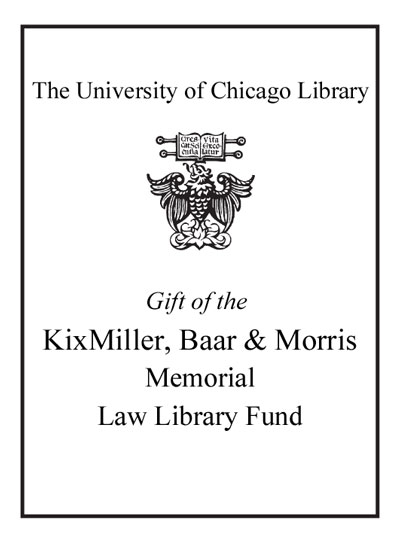Review by Choice Review
In spite of its cute but off-putting title, this volume is anything but cute or off-putting. Following the post-O.J. Simpson hysteria about the proper place of television in the courtroom, Goldfarb, a prolific writer and legal expert, presents a balanced and thoughtful presentation of the controversy. He competently summarizes the pro and con arguments and provides a comprehensive historical and legal account of the apparent conflict between the rights to free press and fair trial. Noting that most states have allowed cameras in the courtroom in one or another type of experiment, this book suggests that the results should allay the concerns of those who fear that television damages the dignity of the judiciary and/or prejudices the rights of defendants. Goldfarb's ambition is to transform the controversy from one that focuses on a clash of rights to one in which there can be a rational accommodation between "complementary rights." He succeeds admirably in realizing that ambition. He concludes by suggesting that it is preferable to allow television in the courtroom unless it can be shown that broadcast would infringe on a recognized constitutional right. Recommended for undergraduate and graduate collections. A. D. Sarat Amherst College
Copyright American Library Association, used with permission.
Review by Library Journal Review
The author, an experienced Washington courtroom attorney, here attempts to reconcile the sometimes conflicting relationship between the First Amendment's protection of the news media's right to report court proceedings and the Sixth Amendment's guarantee of a speedy trial by an impartial jury. The author notes that television's scope and intensity can have such a profound impact in the jury selection process as to diminish the impartiality of potential jurors. Goldfarb calls this part of television's contaminating potential, which, he notes, is underscored by such disparities as evidentiary proceedings, in which the jury is prevented from watching or hearing parts of the proceedings that are widely seen by the public. However, it was television's wide-angle lens that placed into its proper perspective the conflict between the Simpson jury verdict and the public's widespread perception of his guilt. Goldfarb concludes that while television has the potential to pervert justice, the extent to which it enhances justice is greater. A better treatment of this issue could hardly be found; legal scholars and court administrators should add it to their must-read list.Philip Y. Blue, New York State Supreme Court Criminal Branch Law Lib. (c) Copyright 2010. Library Journals LLC, a wholly owned subsidiary of Media Source, Inc. No redistribution permitted.
(c) Copyright Library Journals LLC, a wholly owned subsidiary of Media Source, Inc. No redistribution permitted.
Review by Choice Review
Review by Library Journal Review

